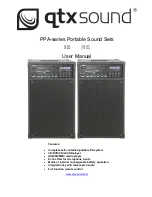
User Manual
R-32DIDO SERIES
ALL RIGHTS RESERVED. NO PART OF THIS PUBLICATION MAY
BE REPRODUCED WITHOUT PRIOR PERMISSION.
www.seneca.it
Doc: MI-00576-2-EN
Page 49
Below is the default mapping of available IOs:
INPUT/OUTPUT
DEFAULT ADDRESS
IO CONFIGURED AS AN
INPUT
DEFAULT ADDRESS
IO CONFIGURED AS AN
OUTPUT
IO1
I1.0
Q1.0
IO2
I1.1
Q1.1
IO3
I1.2
Q1.2
IO4
I1.3
Q1.3
IO5
I1.4
Q1.4
IO6
I1.5
Q1.5
IO7
I1.6
Q1.6
IO8
I1.7
Q1.7
IO9
I2.0
Q2.0
IO10
I2.1
Q2.1
IO11
I2.2
Q2.2
IO12
I2.3
Q2.3
IO13
I2.4
Q2.4
IO14
I2.5
Q2.5
IO15
I2.6
Q2.6
IO16
I2.7
Q2.7
IO17
I3.0
Q3.0
IO18
I3.1
Q3.1
IO19
I3.2
Q3.2
IO20
I3.3
Q3.3
IO21
I3.4
Q3.4
IO22
I3.5
Q3.5
IO23
I3.6
Q3.6
IO24
I3.7
Q3.7
IO25
I4.0
Q4.0
IO26
I4.1
Q4.1
IO27
I4.2
Q4.2
IO28
I4.3
Q4.3
IO29
I4.4
Q4.4
IO30
I4.5
Q4.5
IO31
I4.6
Q4.6
IO32
I4.7
Q4.7
So if, for example, I need 16 inputs and 16 outputs, I can use the Booleans from I1.0 to I2.7 for the inputs (which
will therefore be found in the IO1 ... IO16) and the Booleans from Q3.0 to Q4.7 for the outputs (which will then
be found in the IO17 ... IO32).



































